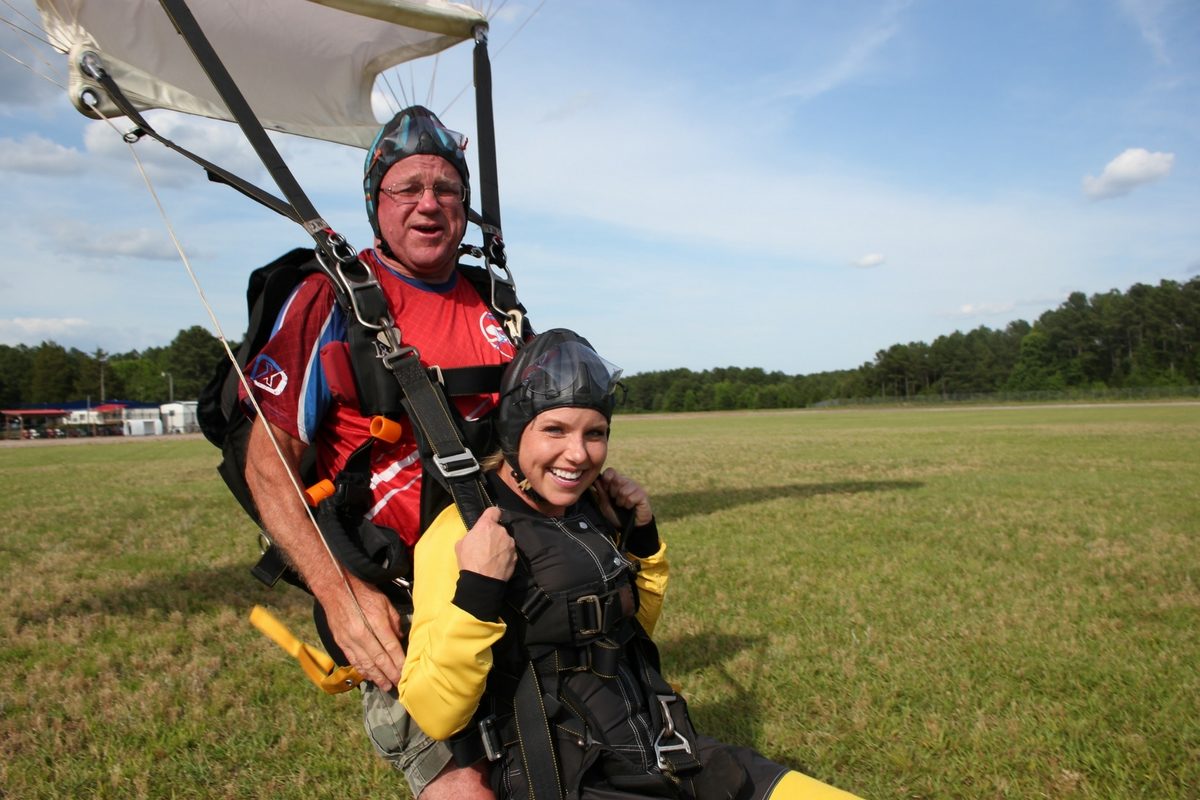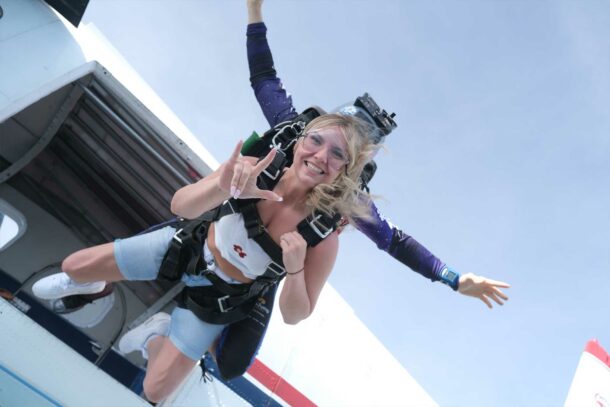How Do AADs in Skydiving Work?
Wednesday, July 19, 2023
Skydiving has come a long way, and in this modern age, we are constantly looking for the best ways to improve safety in our sport so that people can enjoy skydiving for many years to come. The skydiving AAD is possibly one of the most pivotal life-saving technological advances in skydiving that truly revolutionized the sport by drastically improving skydiving safety. So, what is a skydiving AAD and how does it work? We’ve got your answers here!

What is an AAD in Skydiving?
In skydiving, “AAD” stands for Automatic Activation Device. The Automatic Activation Device is a microprocessor computer, no bigger than your finger, that was developed through extensive engineering efforts in order to improve skydiving safety and revolutionize the sport. Essentially, in the event that a jumper is unable to deploy their parachute, the skydiving AAD will automatically deploy the reserve parachute at a certain altitude and certain speed. (The reserve parachute is the “backup” parachute inside each skydiving rig).
Skydiving AAD: How Does it Work?
Skydiving AADs are programmed to activate and deploy the reserve parachute when a skydiver has reached a certain speed at a certain altitude. In other words, if you are descending at a higher-than-normal vertical speed at a low altitude, the AAD will recognize that there is a problem. This will trigger the activation device to initiate the reserve parachute opening sequence in an effort to provide the necessary lift to slow down the descent rate to a safer level.
The system essentially assumes that you did not deploy your main parachute in a timely manner due to the fact that you are falling at speeds above the normal parameters for someone who is under canopy. This life-saving device was designed for scenarios in which the skydiver is unable to deploy their main parachute due to an injury, loss of consciousness, or other life-threatening situation.
How does it work? The AAD is designed to calculate altitude and rate of descent by measuring changes in barometric pressure. Every time the AAD powers up, the unit calibrates by taking an average value of pressure, setting a current pressure at ground level, and “zeroing” itself. Barometric pressure can naturally change over time, which is why the AAD is also designed to take intermittent readings throughout the day in order to adjust for any changes in conditions.
Each skydiving AAD consists of three parts: a control unit, a processing unit, and a cutter unit.
- The Control Unit: A small screen display with a button for powering on and adjusting the AAD firing parameters.
- The Processing Unit: Measures the barometric values.
- The Cutter Unit: If the AAD firing parameters are met, an electronic pulse activates the cutter unit. The cutter unit is what cuts the closing loop that is located inside the reserve container, which initiates the reserve opening sequence, freeing a spring-loaded pilot chute and deploying the reserve parachute.

Parachute Emergency Procedures
Each licensed skydiver and skydiving instructor has been thoroughly trained to perform a series of emergency procedures in the event of a main parachute malfunction or emergency. This is done by firmly grasping and pulling the “cutaway” pillow handle that will disconnect the main parachute, then, the jumper will pull the reserve handle to deploy the reserve parachute. Although parachute malfunctions are rare, the reserve parachute is in place in the chance that there becomes an issue with the parachute for whatever reason.
The reserve parachute is to be packed and repacked by a certified professional parachute rigger every 180 days. The skydiving AAD should only be relied on if the skydiver is, for whatever reason, unable to manually deploy their main parachute or complete their emergency procedures by the appropriate altitude.
Does Tandem Skydiving Equipment Have AADs?
Yes, all of the equipment utilized by students and tandem skydivers at Skydive Carolina comes equipped with a parachute automatic activation device.
AADs are designed in a variety of modes, with their own set parameters for altitude and speed that cater to each skydiver’s needs. The altitude and speed are set by the manufacturer, so if you’re looking for a specific mode, it’s best to do your research on different manufacturers and what options they have. Here is an example of some different modes for different types of skydivers:
- Tandem — higher activation altitude to allow for the larger canopies being used
- Student — specific parameters for those learning how to skydive
- Expert — the most commonly used AAD for licensed skydivers
- Speed — highest activation speed, usually designed for swoopers
- Wingsuit — specialized for skydivers who participate in the wingsuit discipline
What Altitude Do Tandem AADs Fire?
The altitude at which tandem AADs fire depends on the parameters that are set by the manufacturer. Tandem AADs are specifically designed to be used on tandem-style skydives by programming a higher activation altitude in order to account for the larger canopies being used. The descent rate for activation on most Tandem AADs is typically around 78 mph with the default activation altitude at around 1900 ft AGL.

Does the skydiving AAD have you feeling even more confident in taking the leap? Give us a call to book your skydive or if you have any more questions! Blue skies.
Related Article: 7 Skydiving Safety Measures You Should Know
Copyright © 2024, Skydive Carolina, All Rights Reserved.
DropZone Web Design & Marketing by Beyond Marketing, LLC





